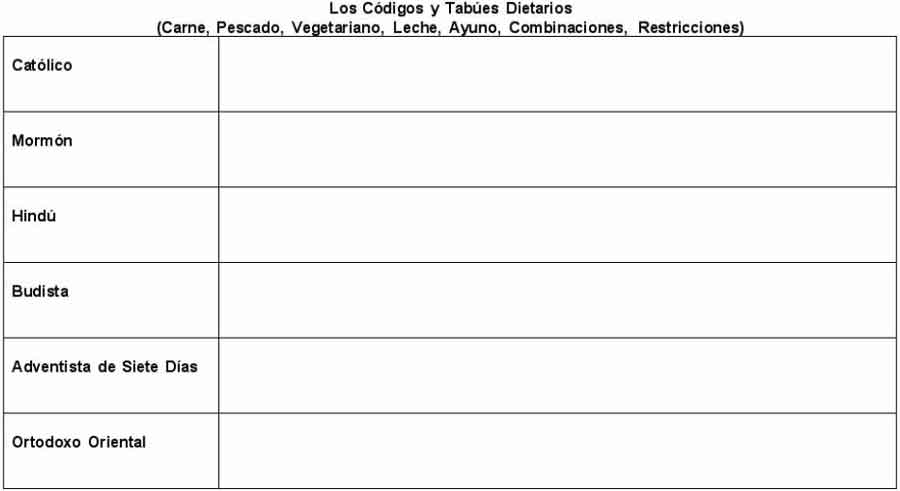|
Title |
La comida y la religión (3) |
|
Unit/Activity No. |
Food History/Activity 8 |
|
Geographic Topic |
cultural significance of foods in religion |
|
Language Topic |
food |
|
Language Function |
describe, ask information questions |
|
Language Standard |
1.1, 1.3, 3.1 |
|
Geography Standard |
10 |
I. BACKGROUND INFORMATION FOR TEACHERS
Teacher Instructions
| Step 1. | Cut out the six religion strips located in the materials section (católico, hindú, adventista de siete días, mormón, budista and ortodoxo oriental) and place them into a container. |
| Step 2. | Place students into six different groups. Number the groups from 1 to 6. Have one member of each group pick one of the strips. |
| Step 3. | Using the internet or library resources, each group will investigate the dietary laws and taboos of the selected religious group and write the information in paragraph form. Each member of the group should have a copy of the paragraph and will be prepared to teach the information to others. |
| Step 4. | Form students into new groups that include a member from groups 1 through 6 and give each student a copy of Handout 1. In turn, each student will teach their new group the information they have found, while the new group members fill out Handout 1. Group members are to ask the presenter for clarification and more information. |
| Step 5. | Using Transparency 1, debrief by having students volunteer information to fill in the chart. Invite students who have personal knowledge or additional information to add to the lists. |
Materials
Six Religion Strips

